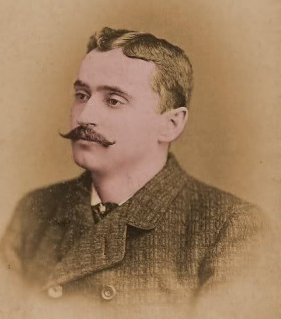 Edward Hugh (Ned) Hanlon | Mount Pleasant ParkGolf CourseMaryland's Tournament CourseEstd. June 30, 1934 | Charles Augustin (Gus) Hook |
 Edward Hugh (Ned) Hanlon | Mount Pleasant ParkGolf CourseMaryland's Tournament CourseEstd. June 30, 1934 | Charles Augustin (Gus) Hook |
A barn built by the Taylor family, former owners of the property, stood between the ninth and eighteenth greens. The Park Board had planned to have this structure renovated for use as a clubhouse and pro shop when money for the project became available. In the meantime, the course superintendent used the barn to store six mowers, a tractor, several hayracks, and other tools used to keep the course in shape.
At 11:00 p.m. on Wednesday, November 13, 1935, a fire broke out in the barn. Flames shot high into the air, illuminating the night sky. Hundreds of local residents gathered to watch the spectacle, and a police detail headed by Lieutenant Theodore Muller was called in to maintain order and direct traffic. Firefighters ran a hose from a branch of Herring Run, a quarter of a mile from the barn, but they couldn’t pump enough water up the steep grade to put out the fire. They were able to prevent the fire from spreading to the home of Hollis Howe, who lived a short distance away. [It is not known if Mr. Howe was living in the Taylor Mansion, or in another, now gone, building.]
Members of the Park Board, who were notified of the blaze while meeting in session at their Baltimore Stadium offices on 33rd Street Boulevard, raced to the scene. By 1:00 a.m., the barn had burned to its stone foundation, and firefighters hosed down the embers. George L. Nichols, secretary of the Park Board, estimated the value of the loss at $75,000.
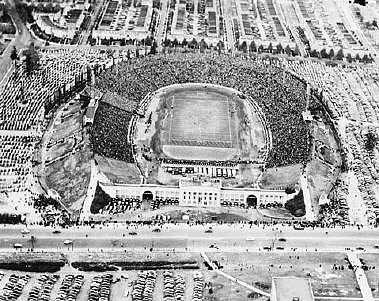 Baltimore Stadium, above, in 1944 on 33rd Street Boulevard (the site on which Memorial Stadium was built). The Park Board offices
were located in the administrative area of the stadium, shown in greater detail below.
Baltimore Stadium, above, in 1944 on 33rd Street Boulevard (the site on which Memorial Stadium was built). The Park Board offices
were located in the administrative area of the stadium, shown in greater detail below.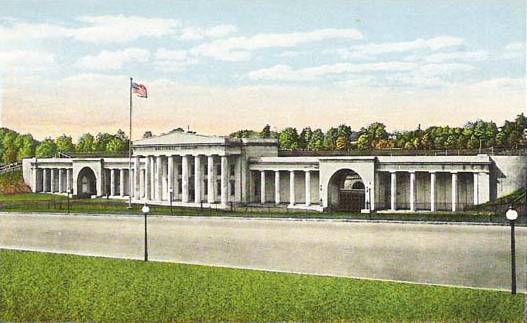
The Park Board voted on April 11, 1936, to remodel the Taylor Mansion to house the clubhouse and pro shop. It was determined that the cost of a new building would far exceed the cost of renovating the existing structure, and the less expensive alternative was chosen.
The remodeling was completed in about a year, and the dedication ceremony was set for April 25, 1937. The weather didn’t cooperate. Red, white, and blue bunting had been placed on a platform specially built as a dais for the ceremony. A howling wind blew the bunting to shreds. Rain forced the many young women in attendance to cover what the Baltimore Sun termed their “attractive sports costumes” under raincoats and umbrellas. A sound truck that was to be used to broadcast to the crowd during the festivities developed a mechanical defect, and was rendered useless. The rain and wind forced the scheduled exhibition match to be reduced from eighteen holes to nine.
Nevertheless, the 1,500 golf fans who attended the dedication were reported in good spirits. Mayor Howard W. Jackson was led on an inspection tour of the renovated premises before the ceremony began.
At 1:00 p.m., buglers sounded the call to attention. The Rev. Louis C. Vaeth delivered the invocation. Mayor Jackson gave the keynote address. C. K. Oakley, president of the Mount Pleasant Golf Association, announced that courtesy life-memberships in that organization had been extended to the mayor; Morton McI. Dukehart, founder of the Public Parks Golf Association; C. Markland Kelly, John P. Brandau and Richard M. Baker, members of the Park Board; George Leroy Nichols, general superintendent of parks; Charles A. Hook, superintendent of Clifton District and the architect of the course; James H. Preston and William F. Broening, former mayors of Baltimore; George Weems Williams, J. Cookman Boyd, William I. Norris and George W. Cameron, former presidents of the Park Board; Henry S. Barrett, Dr. J. M. H. Rowland and Dr. James W. Cain, former presidents of the association.
 The original certicate is in the headquarters building of the Baltimore Municipal Golf Corporation on Hillen Road. In addition to the
validating signatures of association officers Gertrude B. McGrath (secretary)
and Columbus K. Oakley (president), the document bears the autographs of the four touring professionals who played the
exhibition match. Thompson's is on it twice,
presumably redone so it wouldn't be obscured by a frame. Click the image to see it full screen.
The original certicate is in the headquarters building of the Baltimore Municipal Golf Corporation on Hillen Road. In addition to the
validating signatures of association officers Gertrude B. McGrath (secretary)
and Columbus K. Oakley (president), the document bears the autographs of the four touring professionals who played the
exhibition match. Thompson's is on it twice,
presumably redone so it wouldn't be obscured by a frame. Click the image to see it full screen.
Gus Hook was not present at this ceremony. Ned Hanlon could not attend. He had passed away eleven days before, at the age of 79, a day after leaving the Park Board offices where he was engaged in planning this dedication ceremony. Hook did not attend the Opening of the course in 1934—why he missed both that and this ceremony is a curious mystery. His life membership certificate was presented this day, according to a Baltimore Sun article, "by mention."
During the ceremony, two rooms on the first floor of the clubhouse were named in honor of dignitaries. One room was named after Mayor Jackson and another was named after the recently deceased Ned Hanlon, former president of the Park Board. The Baltimore Sun article reports that a large oil portrait of each man had been commissioned, and each was unveiled and hung in the room honoring its subject.
Four touring golf professionals conducted a skills clinic prior to teeing off for their better-ball match. Lawson Little, two-time amateur champion of both the United States and Britain, and who would go on to win the U.S. Open in 1940, was paired with Horton Smith, the 1936 Masters champion and winner of the first Masters in 1934. Their opponents were Jimmy Thompson, the long-hitter who would finish second by a stroke to Lawson Little in the upcoming Canadian Open, and Lighthorse Harry Cooper, runner-up in the 1936 U.S. Open and runner-up to Horton Smith, who birdied three of the last five holes, in the 1936 Masters.
When the rain and wind subsided, the abbreviated match began. Jimmy Thompson recorded the best score. He parred the first six holes, then tried to drive over the trees on No. 7 to cut the dogleg. He missed, and wound up with a double bogey, the only blemish on his card. Cooper needed three shots to reach the greens on Nos. 2, 4, and 7, and couldn’t get up and down on any of those holes. Smith missed the second, third, seventh, and ninth greens, and likewise couldn’t get up and down. He did record the only birdie of the day for the foursome, rolling in a thirty-foot putt on No. 8. Little missed the green on No. 3, took a double when trying to cut the dogleg on No. 7, and couldn’t get up and down on Nos. 8 or 9. Scores for the nine holes were:
Thompson – 38; Cooper – 39; Smith – 39; Little – 41.
Par was 36.
Mr. Thompson and Mr. Cooper won the match, 2-up.
[Editor's note: A combined thirteen over for nine holes. Yuk, yuk, yuk! One birdie among the foursome. Wheeee, doggie! In 1936, these four dudes finished first (Smith), second (Cooper), eighteenth (Thompson) and twenty-second (Little) at a little clambake that would eventually think so much of itself that it would anoint its tournament the "Masters Championship" (over the strong objections of its more modest co-founder and co-designer) at a much less difficult and far less challenging golf course in Augusta, Georgia.]
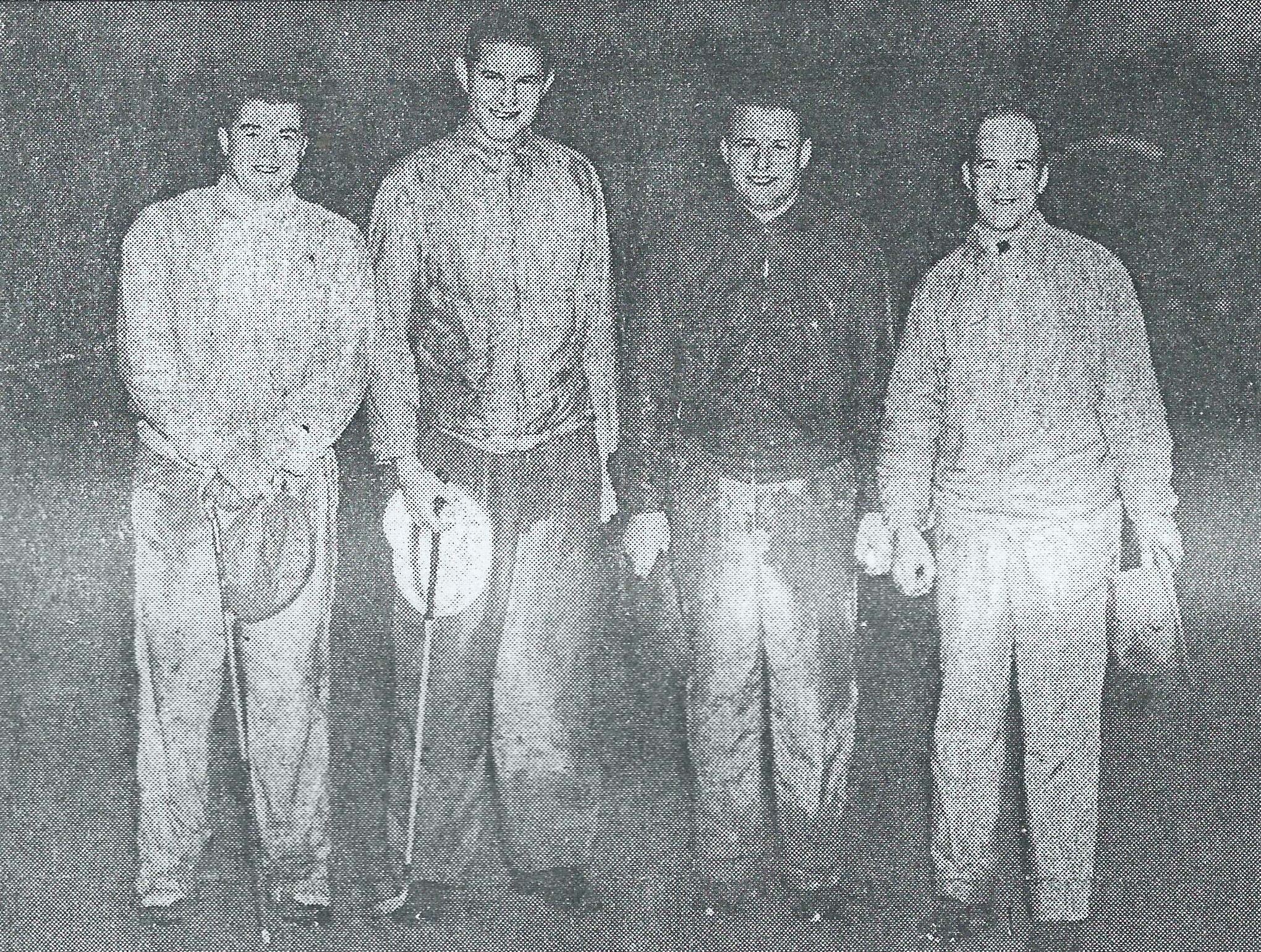 Lawson Little - Horton Smith - Jimmy Thompson - Lighthouse Harry Cooper
Lawson Little - Horton Smith - Jimmy Thompson - Lighthouse Harry Cooper
 Horton Smith putting on the second green
Horton Smith putting on the second green
 Above: The Taylor Mansion in 1936. Below: The mansion in 1939. Note that the porch has been enclosed, one of the improvements to the structure made in preparation for the 1939 Publinx.
Above: The Taylor Mansion in 1936. Below: The mansion in 1939. Note that the porch has been enclosed, one of the improvements to the structure made in preparation for the 1939 Publinx.
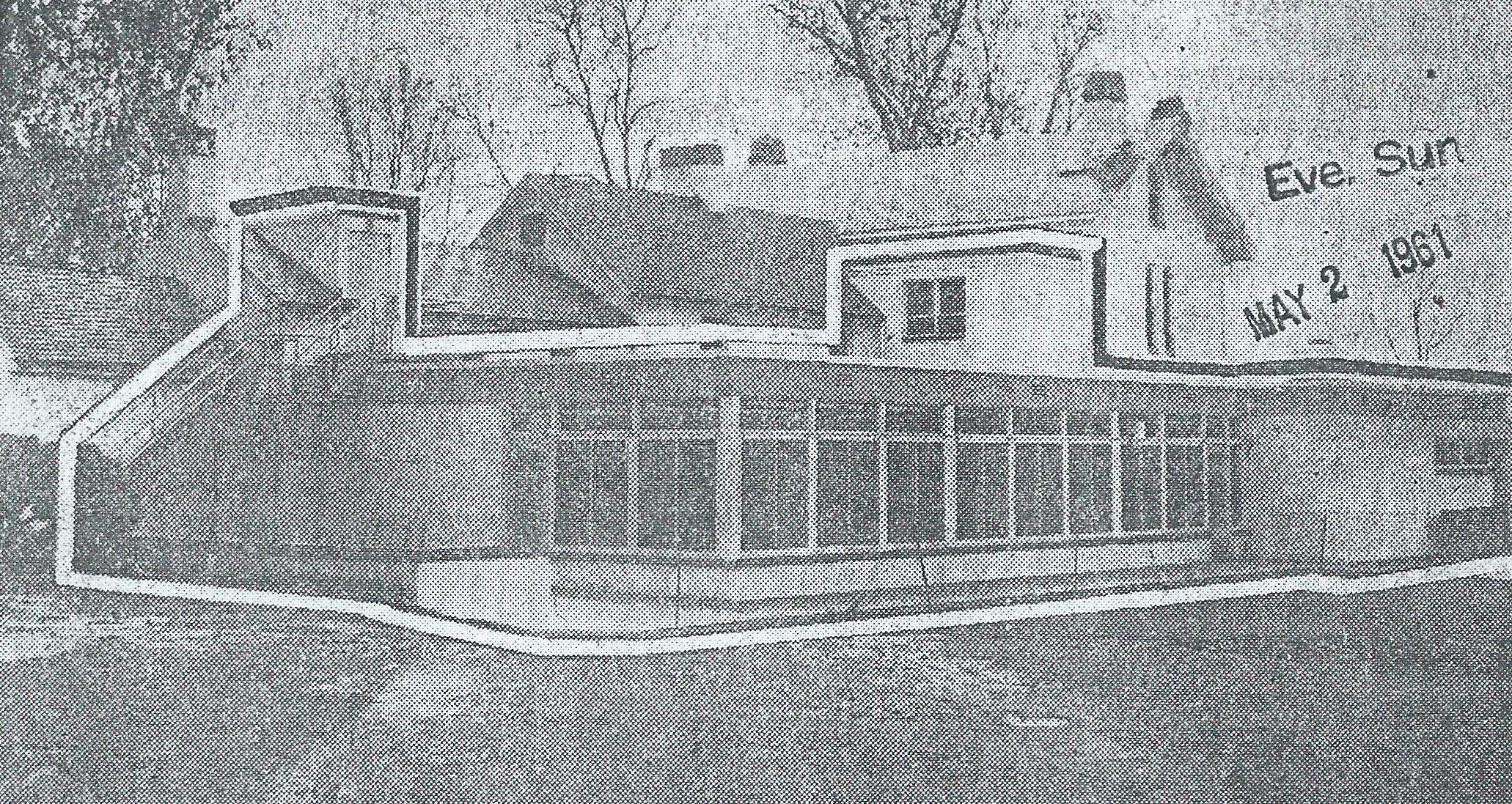 The outlined section shows the 1961 addition which was made the pro shop.
The outlined section shows the 1961 addition which was made the pro shop.
